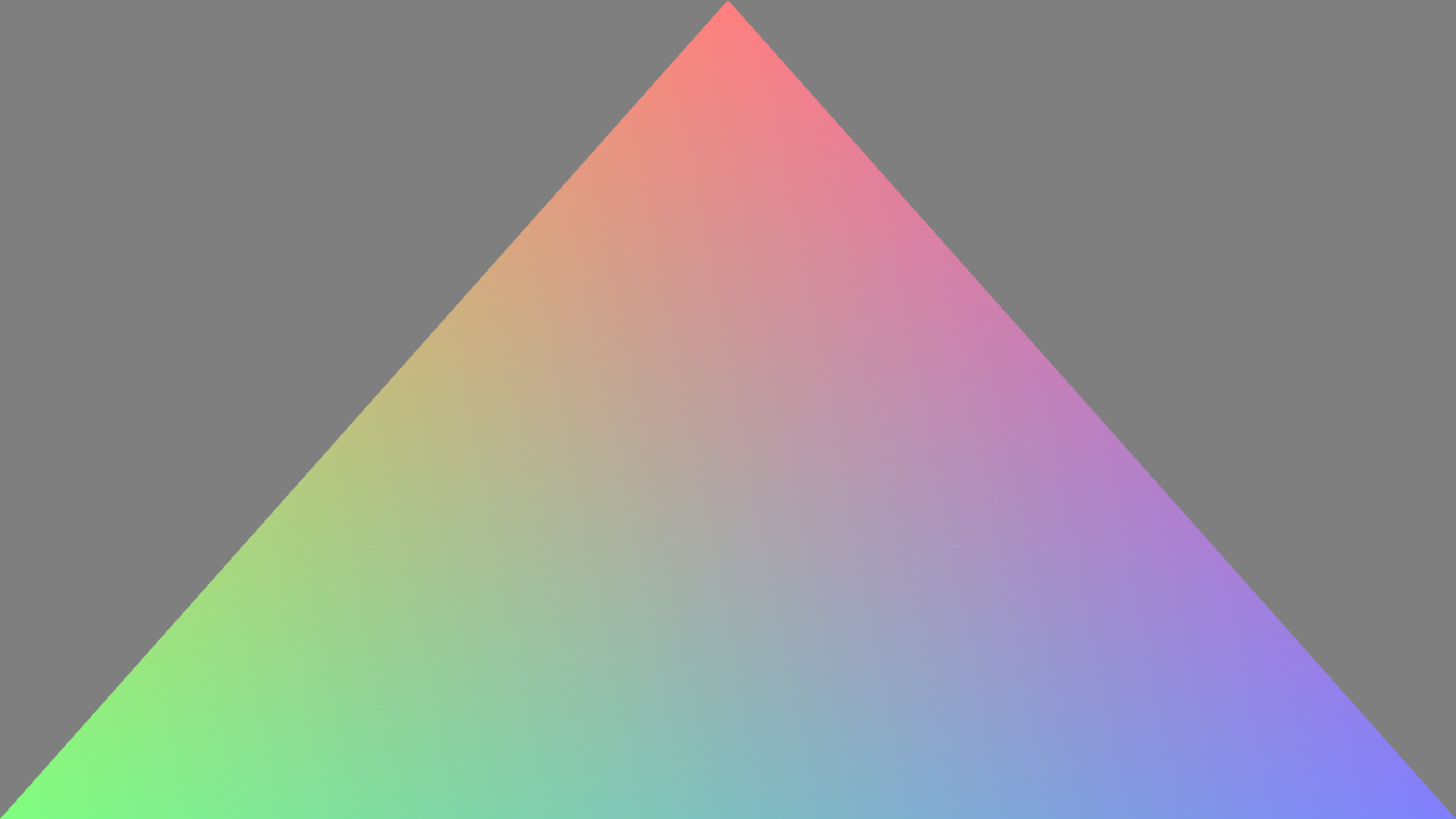This is a 3D rendering engine for the Rust programming language based on an existing Rust Vulkan library (Vulkano). It is mostly complete, but not actively maintained because I have abandoned it to switch to Ash from Vulkano.
 Lighting demo using Blinn-Phong shading with ambient, diffuse, specular and
normal maps
Lighting demo using Blinn-Phong shading with ambient, diffuse, specular and
normal maps
 Simple mesh loading demo using normals to shade the surface
Simple mesh loading demo using normals to shade the surface
 Minimalist example showing the use of multiple passes: first a triangle is
drawn, then another fragment shader is used to desaturate it.
Minimalist example showing the use of multiple passes: first a triangle is
drawn, then another fragment shader is used to desaturate it.
Render-engine isn't on crates.io, but you can still include it in your
Cargo.toml through git:
[dependencies]
render-engine = { git = "https://github.com/cynic64/render-engine" }To make sure the version stays consistent, including a revision is a good idea:
[dependencies]
render-engine = { git = "https://github.com/cynic64/render-engine", rev = "cf4f0804" }This repo is a workspace with 3 sub-crates: render-engine, re-ll and some examples of its use.
re-ll is a set of low-level helpers for interacting with Vulkano, render-engine is the actual rendering library.
As for the examples, the most interesting are triangle, which is the usual
mulitcolored triangle demo, base, which loads a 3d model and includes an
orbiting camera, and pretty, which is the most advanced and the one shown in
the youtube video.
There are not yet any high-level rendering libraries for Rust, and especially not for Vulkan. The intent of this project was to fill that gap, and although I am abandoning it I still hope to eventually achieve what I wanted to with a new library built using lower-level Vulkan bindings (Ash). It was still a lot of fun and I learned a lot, so no regrets.
Although it's not feature-complete, it has fulfilled its purpose of being higher-level than existing rust libraries. The triangle example is 103 lines including whitespace, compared to 474 for Vulkano and 1186 for Vulkan in C++. Lines of code is not a great metric, but the difference is clear anyway.
Yes! See the examples directory and the previous youtube video for a demo of what can be done. Render-engine supports:
- User-defined vertex types and polygon fill modes
- Multiple passes
- Multisampled anti-aliasing
- Shaders loaded at runtime
- Uniforms, both textures and pure data
- All image formats supported by Vulkan
It also includes a custom input handling library for things like mouse movement and keypresses (it's a layer on top of winit). That said, it's very unfinished and definitely not to be used for anything more than hobby projects. Performance is a bit worse than it should be compared to raw Vulkan and some basic features like mipmaps aren't supported.
It doesn't exist (there are comments, but not enough for someone else to easily understand the codebase). The point of this was for me to learn, and because the structure of the library was constantly changing anyway I didn't write any documentation
Vulkano is an ambitious library that has some really cool features and I appreciate the work of those who made it even more after creating my own rendering engine. However, the lack of support for certain features (mipmaps or constructing framebuffers dynamically, for example) as well as the lack of documentation when it comes to anything more complicated than rendering a simple 3D model (using multiple queues, for example) were starting to bother me.
I've started working on a new rendering engine with ash (not yet uploaded to github) and so far I really enjoy it, especially how the existing Vulkan docs transfer pretty much directly, meaning there are automatically a huge number of tutorials and solutions available for it.
